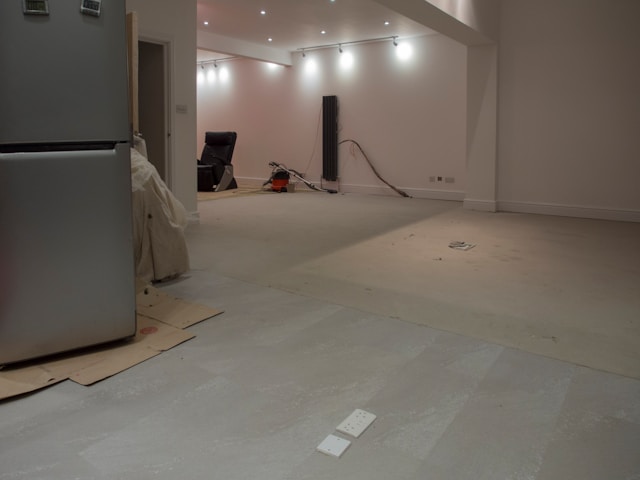- Request Free Quote
- 408-206-0832
- info@baybuildersconstruction.com
Avoid These 7 Common Mistakes When Installing New Floors in San Jose Homes
June 9, 2025When installing new floors in your San Jose home, it’s vital to avoid several common mistakes. Neglecting subfloor preparation can lead to uneven floors and potential failure, so make certain your subfloor is clean, level, and repaired. Skipping flooring acclimation can cause warping and buckling, so let your flooring adjust to the local temperature and humidity. Failing to leave expansion gaps around walls and obstacles can result in buckling. Choosing the wrong material for the room, especially in moisture-prone areas, can lead to damage. Neglecting post-installation care, such as immediate spill cleanup and proper maintenance, can shorten your floor’s lifespan. By avoiding these mistakes, you can make certain your floors last longer and look better. Continuing to learn more about these common errors will help you make informed decisions for a successful installation.

Introduction
Installing new floors in your San Jose home is a significant investment that requires careful planning and execution to guarantee durability and aesthetic appeal. The Mediterranean climate and local building regulations in San Jose introduce unique considerations that must be addressed to guarantee your flooring installation is successful.
When undertaking a flooring project, it is essential to be aware of common mistakes that can compromise the quality and longevity of your floors. Flooring mistakes to avoid include poor subfloor preparation, skipping the acclimation process, neglecting expansion gaps, and incorrect underlayment installation. These oversights can lead to issues such as uneven floors, warping, and premature wear.
Additionally, many homeowners overestimate their DIY capabilities, which can result in subpar installations whichh is why flooring contractors in San Jose are important. Choosing inappropriate materials for the climate and intended use of the room is another frequent error. Finally, failing to maintain your new floors properly can shorten their lifespan and reduce their appearance.
1. Neglecting Subfloor Preparation
Neglecting subfloor preparation is one of the most critical mistakes you can make when installing new floors in your San Jose home. The subfloor serves as the foundation for your flooring, and any imperfections can greatly impact the durability and appearance of your new floors.
To avoid this mistake, start by evaluating the current condition of your subfloor. Check for signs of damage such as rot, cracks, or weak spots. Verify the subfloor is clean and free of debris, as a clean surface is essential for proper adhesion of the new flooring.
Structural integrity is paramount; any areas with rot, mold, or damage must be repaired or replaced. A subfloor that is uneven or has moisture issues can lead to problems like buckling, warping, or gaps in your flooring. Proper subfloor preparation guarantees a smooth, even surface that supports the longevity and performance of your new floors.
2. Skipping Flooring Acclimation
After confirming your subfloor is ready, the next step in the flooring installation process is to acclimate your new flooring materials. Flooring acclimation is a critical step that many homeowners overlook, but it is essential for a successful and long-lasting installation.
Acclimation involves allowing your flooring materials to adjust to the temperature and humidity levels of the room where they will be installed. This process is particularly important in San Jose’s Mediterranean climate, where humidity and temperature can fluctuate considerably. Hardwood, laminate, and even luxury vinyl flooring all need time to acclimate to prevent issues such as warping, buckling, or gaps between planks.
For hardwood flooring, acclimation typically takes at least 48 hours. During this time, the materials should be removed from their packaging and allowed to settle in the installation space. This allows the wood to adjust to the moisture content of the room, preventing problems like cupping, shrinking, and squeaking that can occur if the wood expands or contracts after installation.
Skipping this step can lead to a range of issues, including uneven flooring, gaps, and other moisture-related problems. By taking the time to properly acclimate your flooring, you guarantee a stable, visually appealing, and durable floor that will last for years to come.
3. Failing to Leave Expansion Gaps
How often do homeowners forget to leave expansion gaps when installing new floors? This oversight can lead to significant problems, especially in a Mediterranean climate like San Jose’s, where temperature and humidity fluctuations are common.
Expansion gaps are vital because they allow your flooring to expand and contract naturally. Without these gaps, the flooring can buckle or warp due to the constraints imposed by the surrounding walls and other fixed objects. For hardwood flooring, a gap of 1/4 inch to 1/2 inch is typically recommended, while laminate flooring requires a gap of 1/4 inch to 3/8 inch.
It’s important to maintain a consistent gap throughout the room, including around obstacles like doorways, cabinets, and pipes. Using spacers can help guarantee this consistency. Avoid covering the expansion gaps with baseboards or other trim, as this can prevent the flooring from expanding and contracting properly.
4. Incorrect Underlayment Installation
Incorrect underlayment installation is a common mistake that can markedly impact the longevity and performance of your new floors. In San Jose’s Mediterranean climate, where moisture and temperature fluctuations are common, a properly prepared subfloor and correct underlayment are essential.
When installing new floors, it is important to guarantee the subfloor is level, dry, and free from structural damage. Ignoring this step can lead to issues such as uneven surfaces, expansion and contraction problems, and even damage to the flooring itself, like broken tongue-and-groove connections in hardwood floors.
A moisture membrane is a significant component of underlayment, as it helps protect the flooring from moisture-related problems. Without it, your floors may be more prone to water damage and structural issues. Additionally, verifying the underlayment material is suitable for the type of flooring you are installing is crucial. For example, using non-water-resistant materials in areas prone to moisture, like bathrooms, can void warranties and lead to costly repairs.
Hiring a certified professional who follows manufacturer installation guidelines can help avoid these mistakes and guarantee your floors are installed correctly, maintaining the validity of your warranty. Proper underlayment installation is not just a recommendation; it is a necessity for durable and attractive flooring.
5. Overestimating DIY Abilities
When tackling a flooring installation project in San Jose, it’s easy to overestimate your DIY abilities, especially given the region’s specific climate and building requirements. Overestimating DIY capabilities can lead to a plethora of issues that might seem minor at first but can escalate into major problems.
One of the primary concerns is neglecting subfloor preparation. A DIY installer might overlook notable problems with the subfloor, such as unevenness or moisture issues, which can lead to mold growth, warping, or buckling of the flooring.
Another mistake is failing to acclimate the flooring material to the room’s temperature and humidity levels. This oversight can cause the flooring to warp or buckle once installed, resulting in a costly and time-consuming repair.
Additionally, DIY installers often lack the specialized tools and expertise needed for precise cutting, leveling, and laying of the flooring. This can result in uneven cuts, incorrect measurements, and poor installation quality. The physical labor involved also poses risks of injury and accidents, especially when working with power tools and heavy materials[4].
Hiring a professional installer who is familiar with San Jose’s climate and building regulations can considerably reduce these risks and guarantee a durable and attractive flooring installation. Professionals have the necessary safety gear, tools, and experience to complete the job correctly and efficiently.
6. Choosing the Wrong Material for the Room
Choosing the wrong flooring material for your room can lead to a host of problems, especially in San Jose’s Mediterranean climate. The region’s dry summers and wet winters can severely impact the durability and appearance of your floors if the wrong material is selected.
When it comes to flooring material selection, it’s vital to take into account the specific needs of each room. For instance, areas prone to moisture like kitchens and bathrooms require materials that are resistant to water and humidity. Ceramic or porcelain tiles are ideal for these spaces due to their waterproof nature and ease of maintenance.
In contrast, living rooms and bedrooms can benefit from materials like engineered hardwood or bamboo, which offer a balance of durability and aesthetic appeal. Bamboo, in particular, is highly eco-friendly and grows quickly, making it a sustainable choice. It is also tougher than many traditional hardwoods and can adapt well to San Jose’s climate.
Avoid using materials that are not suited to the climate or the room’s conditions. For example, carpet in high-moisture areas can lead to mold and mildew, while hardwood in areas with extreme temperature fluctuations can result in warping or cracking. By selecting the right flooring material for each room, you can guarantee a durable, attractive, and functional floor that stands the test of time.
7. Neglecting Post-Installation Care
Neglecting post-installation care can drastically shorten the lifespan of your new floors. After investing in new flooring, it is essential to follow the right maintenance and care procedures to protect your investment.
Immediately after installation, especially if you have hardwood floors, allow the finish to cure completely. This can take up to 30 days, depending on the type of finish used. During this period, avoid placing furniture or rugs on the floors to prevent indentations or discoloration. When you do place furniture, use felt pads on the legs to minimize scratches and other damage.
For routine cleaning, sweep, dust mop, or vacuum the floors using the bare floor setting to remove dust and dirt. Clean spills immediately with a dry or slightly damp cloth. Avoid using wet mops, steam mops, or abrasive cleaners, as these can damage the finish and the wood over time.
Use cleaners specifically designed for your floor’s finish, as recommended by your flooring professional. Regular maintenance, such as recoating the floors when they start to look dull, can guarantee your floors remain attractive and durable for years to come.
San Jose-Specific Considerations
After ensuring your new hardwood floors are properly cared for post-installation, it’s important to take into account the unique conditions of San Jose that can impact your flooring. San Jose, like the broader Bay Area, experiences a moderate Mediterranean climate characterized by mild, wet winters and dry summers. This climate fluctuation can greatly affect your flooring.
When choosing hardwood flooring, consider engineered hardwood, which is more resistant to temperature and humidity changes compared to solid hardwood. Proper sealing and maintenance are essential to prevent warping or buckling of the floorboards.
Another vital aspect is the underlayment installation. Ensuring the underlayment is correctly installed helps in managing the humidity and temperature fluctuations. It also provides a stable base for your flooring, reducing the risk of unevenness and damage.
Additionally, consider the local microclimates and the specific needs of your home. For instance, wide-plank engineered hardwood, such as those in the Mediterranean Collection, can be ideal due to their durability and aesthetic appeal. These floors are designed to withstand varying humidity levels and come prefinished, which simplifies the installation process.
Conclusion
Installing new floors in San Jose requires a thoughtful and well-planned approach to confirm the floors remain durable and attractive over time. By avoiding common mistakes such as poor subfloor preparation, skipping acclimation, neglecting expansion gaps, and incorrect underlayment installation, you can guarantee your floors withstand the Mediterranean climate and local building regulations.
Hiring a professional for your flooring installation is often the best decision. Professionals are certified in most manufacturer-approved installation methods and stay updated with the latest trends and advancements. They understand the importance of proper subfloor preparation, including moisture membrane and subfloor leveling, which are vital for maintaining the longevity of your floors and keeping your warranty valid.
